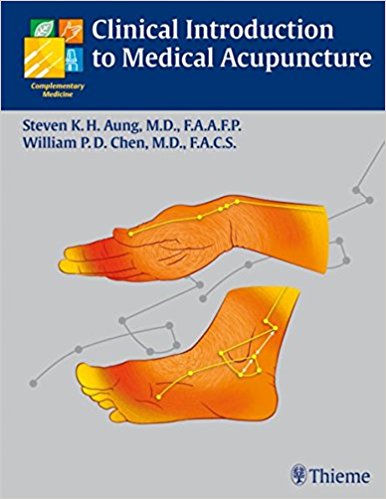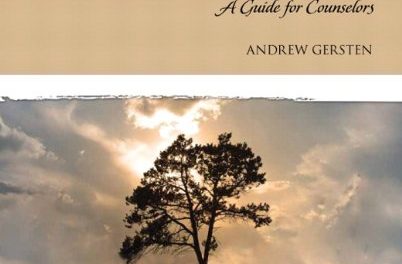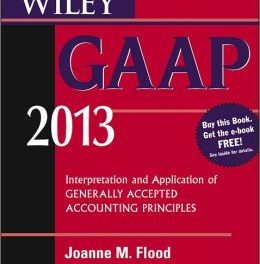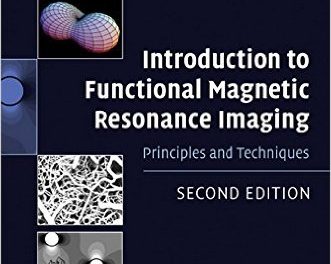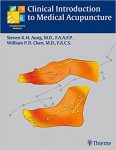 Authors: Steven K.H. Aung, MD; and William P.D. Chen, MD
Authors: Steven K.H. Aung, MD; and William P.D. Chen, MD
Publisher: Thieme – 324 pages
Book Review by: Nano Khilnani
Medical acupuncture (as part of what is termed traditional Chinese medicine or TCM) as a technique for not only relieving pain but also treating numerous conditions and diseases, has been around for about four thousand years, as have related techniques such as moxibustion and cupping, points out Wang Xue-Tai, who has written the Foreword (as have two other people) for this extensive book of 99 chapters. He is Founder and Permanent Honorary President of the World Federation of Acupuncture and Moxibustion Societies (WFAS).
Acupuncture originated in China, spread to nearby Japan and Korea initially, and over the decades and centuries, has spread around the world. Many countries have accepted its beneficial therapeutic modalities as part of their health care practices, with understanding and appreciation increasing globally about natural and holistic approaches to disease and illness.
Why do people in today’s world of modern medical science and technology want to use such an ancient approach? Three reasons are cited by Wang Xue-Tai:
- It is relatively inexpensive and has been proven to be effective in treating diseases without iatrogenic effects (complications after treatment by a physician)
- Modern scientific researchers are verifying that acupuncture has notable effects in regulating the vital energy of the body, relieving pain, strengthening immunity, and enhancing recovery from soft tissue injuries
- Acupuncture appears to regulate various vital energetic imbalances of the body, mind, and spirit.
The World Health Organization supports the use of acupuncture for a wide variety of conditions.
This book of over 300 pages is organized around seven Sections, namely:
- Section I. Introduction to Traditional Chinese Medicine
- Section II. The Channels
- Section III. Acupuncture and Treatment Techniques
- Section IV. Diagnosis and Differentiation of Syndromes, and Treatment Modalities
- Section V. Microsystems
- Section VI. Treatment of Selected Syndromes and Diseases
- Section VII. Traditional Chinese Medicine Therapeutic Modalities
One of the two authors, Dr. Steven K.H. Aung, writes at the outset of this book in the Preface: “Traditional Chinese Medicine (TCM) works hand in hand, heart to heart, spirit to spirit with modern biomedicine and other complementary therapeutic modalities. This integrative approach aims to provide optimal health and enhanced quality of life to all who are suffering. We hope practitioners of all specialties of medicine will read this book with an open mind, appreciate its contents, and apply it competently, creatively, and compassionately in their medical and health care practices.”
To understand the basis of acupuncture, TCM, and the contents of all chapters, it is important to first read and understand the contents of chapter 1, Introduction, and chapter 2, Theoretical Principles of Traditional Chinese Medicine. Both these chapters are at the beginning of Section I, Introduction to Traditional Chinese Medicine: Yin-Yang Theory.
The authors write: “We can understand all aspects of the natural world through the duality of yin and yang (e.g. day and night, hot and cold). Everything in the natural environment can be classified as either yin or yang.” This applies to the human body as well.
There are five basic relationships between yin and yang:
- The opposition of yin and yang
- The interdependence of yin and yang
- The inter-consuming supporting relationship of yin and yang.
- The inter-transforming relationship of yin and yang
- The infinite divisibility of yin and yang.
In a normal healthy state, the inter-consuming relation of yin and yang are in a state of balance, Dr. Aung points out. “if the balance ceases to exist, the result will be a repletion or vacuity of yin and yang. This ultimately leads to the formation of dis-ease (i.e. disorder or disease).”
We assume then that acupuncture techniques help bring back the state of balance and resume a normal healthy state. Table 2-2 – Yin-Yang and the Human Body on page 6 shows that Yang controls the upper part of the body, the exterior, the lateral aspect, and the solid organs, whereas Yin controls the lower part of the body, the interior, the medial aspect, and the hollow organs.
Figure 2-1 – Yin-Yang as a guide to clinical diagnosis and treatments – on the same page indicates that there are eight basic principles of clinical diagnosis, namely: Yin, Yang, Interior (yin), Exterior (yang), Cold (yin), Heat (yang) vacuity (yin or yang), and repletion (yang or yin). He writes that this guide “is referred to as the differentiation of syndromes, equivalent to differential diagnosis in Western medicine.”
This is an interesting and unusual book, and for those who have not read anything on acupuncture or TCM, it serves as a good introduction to the subject.
Authors:
Steven K.H. Aung, MD, FAAFP is Clinical Associate Professor in the College of Dentistry at New York University in New York, New York; and Clinical Associate Professor in the Faculty of Medicine and Dentistry, and Adjunct Professor in the Faculty of Extension and Rehabilitation Medicine at the University of Alberta in Edmonton, Alberta, Canada.
William P.D. Chen, MD, FACS is Clinical Professor of Ophthalmology at Jules Stein Eye Institute in the School of Medicine at the University of California Los Angeles; Senior Attending Physician at Ophthalmic Plastic Surgery Service in the Department of Ophthalmology at Harbor-University of California at Los Angeles Medical Center in Torrance, California; and Associate Clinical Professor of Surgery (WOS) at Aesthetic and Plastic Surgery Institute in the University of California Irvine in Irvine, California.

